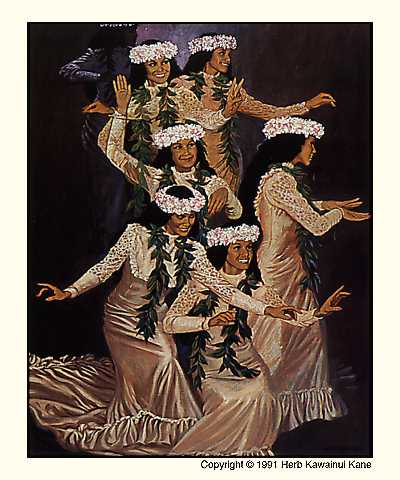
There is nothing more beautiful than a young woman dancing an awana (modern style) hula. In the slow dances especially the audience is spared most of the "look at me" flash characteristic of ballet, modern and ballroom dancing. Graceful movement, a bright smile, a profusion of flowers and a sumptuous long gown combine to form a heart-wrenching image of idyllic feminine beauty, the technique so subtle that it is easy to underestimate the years of practice it requires.
Over one hundred years ago, Chinese immigrants and western traders introduced silk to Hawaii, and among Hawaiian nobility it became the fabric of choice for formal attire. Whether because it depicted refinement or enhanced the wearer's appearance we may never know, but shiny satin eventually became synonymous with a style of gown called a holoku. Today, a holoku can be worn in any setting where formal attire is called for, but most often they are seen in hula performances.
A distinguishing characteristic of the holoku is its train, which may be little more than a flounce in the back or as long as the finest wedding gown's. Another characteristic is a snug fit at least down past the hips, in contrast with a mu'u mu'u which is baggy.
Here is an example of a what appears to be a velvet holoku with a beautiful long train:

Although lacking a long train, the gowns in the following pictures feature the shiny satin fabric and snug fit. Another common element that is visible in some of these photos is the pair of seams that run the length of the dress in front. These pictures were taken during live performances at The Merrie Monarch Hula Festival in Hilo, Hawaii. Most likely the perils of dancing in an ensemble while wearing gowns with long trains accounts for the bobbed trains visible here. When dancing solo it is normal to see trains like the first example.



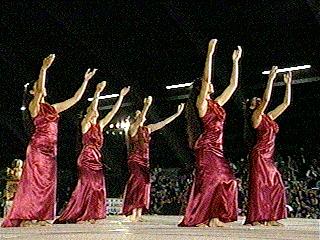


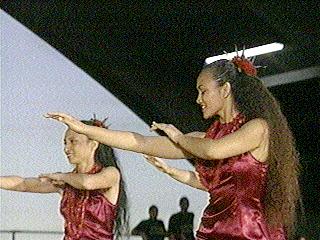
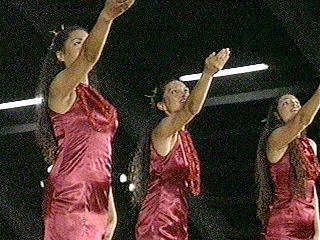
So strong is the association between satin holoku and Hawaiian Royalty, many primary schools dress little girls in them when they pay tribute to Hawaii's heritage on May Day. Here is a rather extravagant version of such a show:
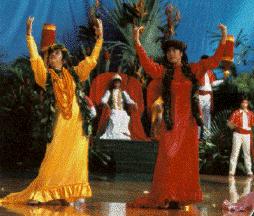
Many island artists have tried to capture the beauty of hula dancers in satin holoku. Here is a painting by Herb Kane, entitled "Hula Holoku."
